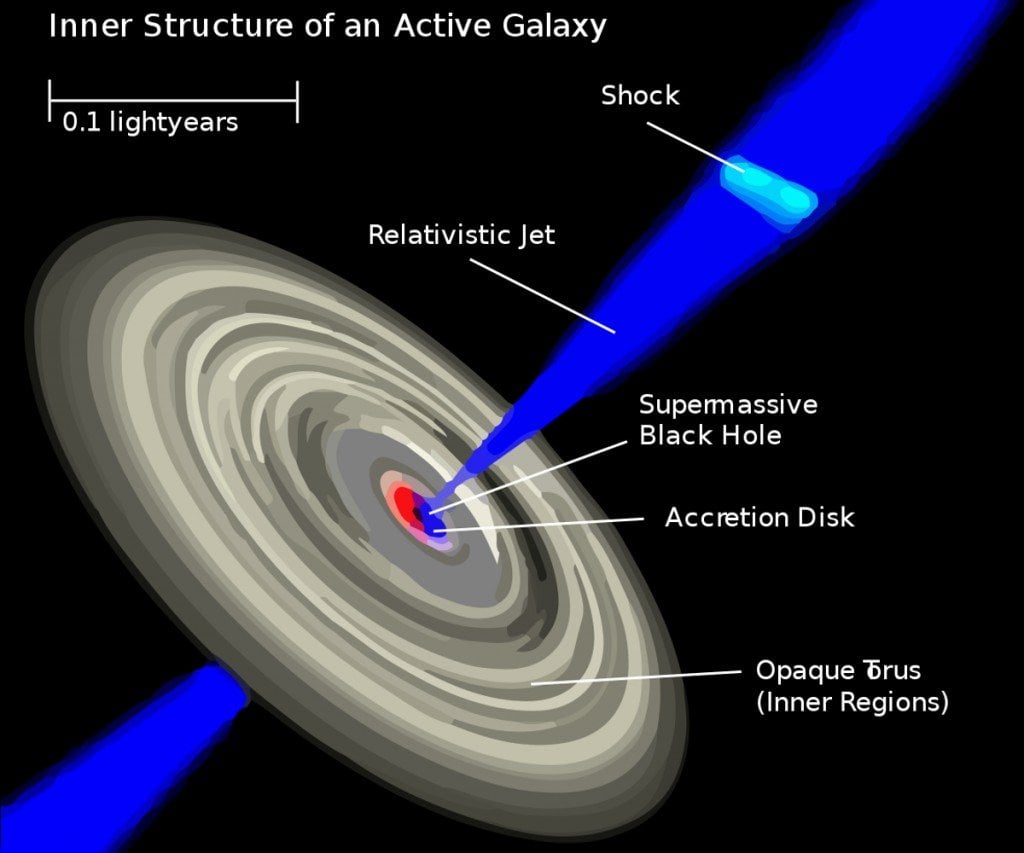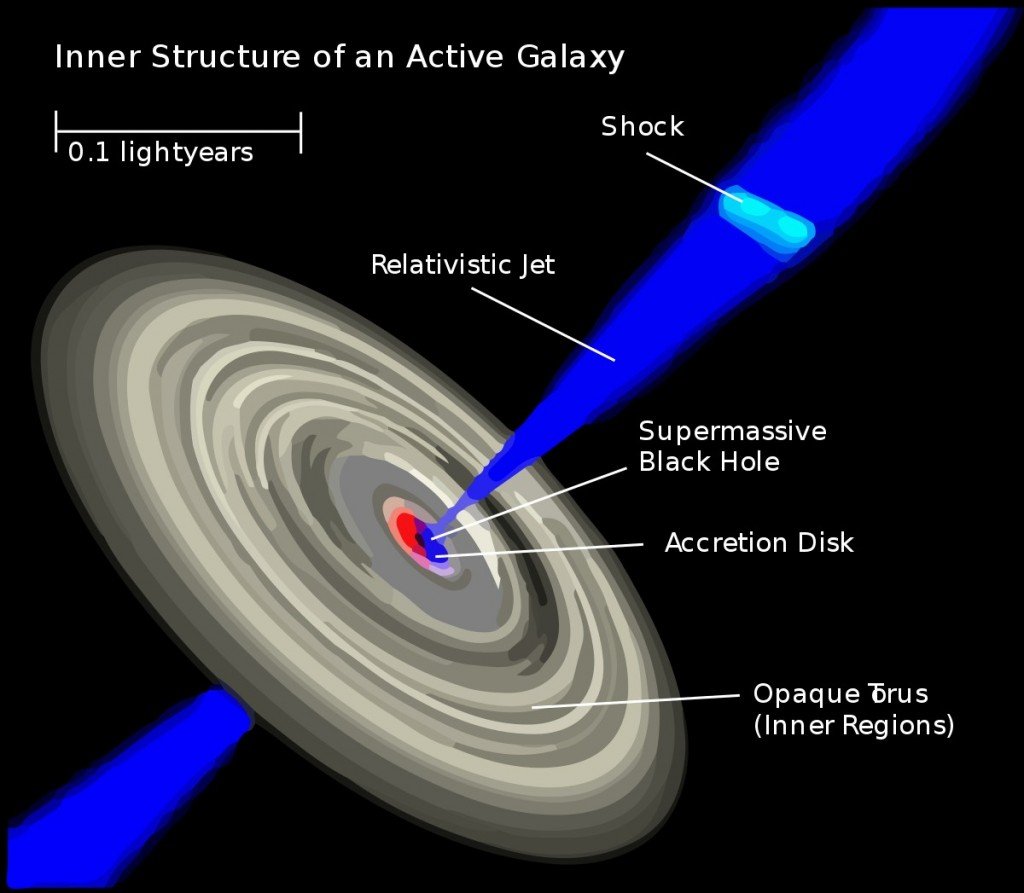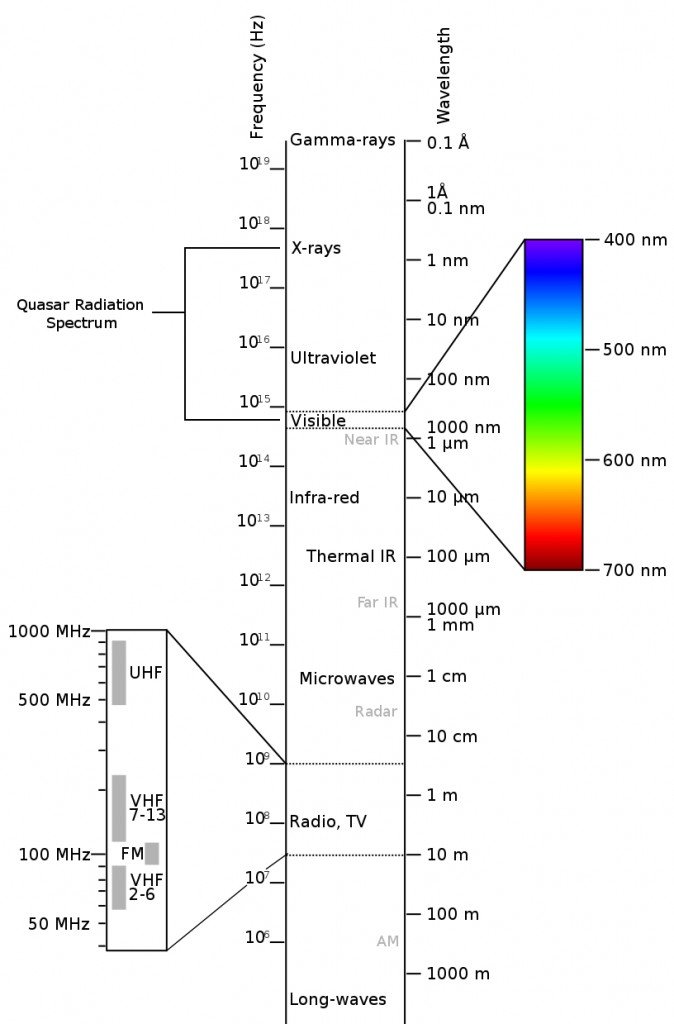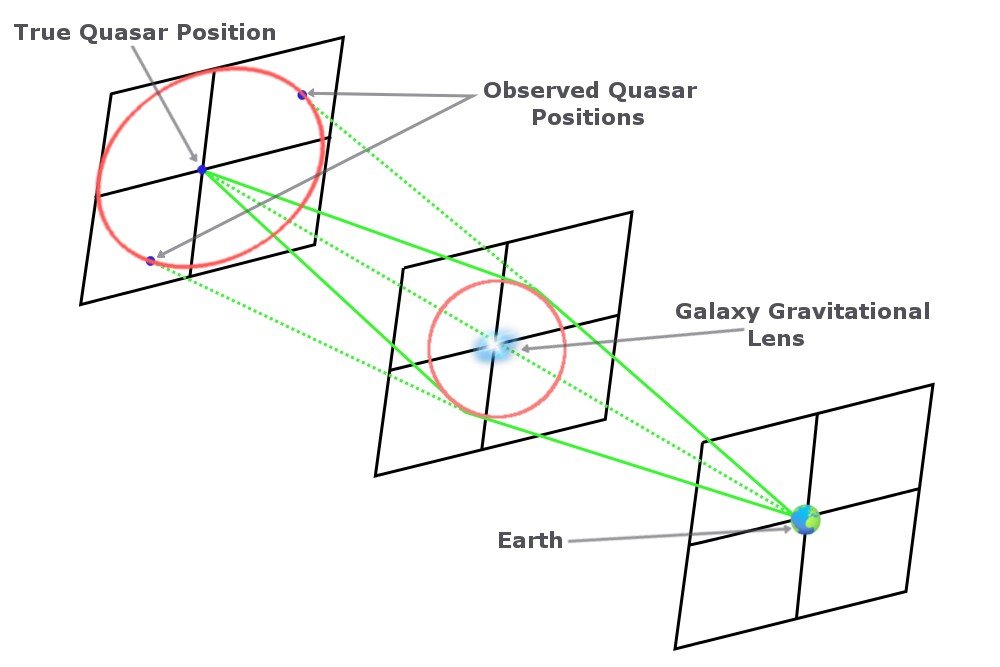Table of Contents (click to expand)
A Quasar is an extremely Active Galactic Nucleus. An AGN is nothing more than a supermassive black hole that is active and feeding at the center of a galaxy. Quasars are extremely bright and sometimes mistaken for stars. The word “quasar” originates from the contraction of “quasi-stellar”, which references a star-like radio source.
We’ve all heard the nursery rhyme ‘Twinkle Twinkle Little Star’ and for many of us, ever since those fateful childhood years, we have been captivated by the shining lights of the heavens above. As our understanding of science increased, however, we came to understand that stars are not the only celestial bodies that emit light.
We learned that other celestial bodies, such as the moon (of Earth) and planets (e.g., Mars) have the ability to reflect the Sun’s light at certain times. This gives us the illusion that they are luminescent. Even distant stars (sometimes millions of light-years away) are seen because of the light they emit. However, what if I told you that one of the brightest objects in the Universe is not a star or a reflecting celestial object, but rather something quite dark called a Quasar.

Recommended Video for you:
Quasars Definition
A quasar can be defined as an extremely Active Galactic Nucleus. An AGN is nothing more than a supermassive black hole that is active and feeding at the center of a galaxy. They are extremely bright and sometimes mistaken for stars. However, the energy output of a star is nowhere near the amount of energy pumped out by a quasar. The word “quasar” originates from the contraction of “quasi-stellar”, which references a star-like radio source. When they were first identified in the 1950s, they were identified as a source of radio wave emission with unknown physical origins.
Formation Of A Quasar
A black hole is a region in space that has such a high gravitational force that not even light can escape it. The black hole at the center of a quasar has a mass that is usually millions or billions of times a solar mass. A solar mass can be defined as the mass of our sun (mass of our sun = 1.998 x 10^30). Ongoing research is still trying to explain how these supermassive black holes have come into existence.![]()


At the center of a quasar is a black hole surrounded by a large rotating cloud of gas. This cloud of gas is called the Accretion Disk, and the black hole feeds on this disk. As the gas falls into the black hole, it is heated up to millions of degrees. The gas emits thermal radiation due to such extreme heat. The thermal radiation emitted makes the quasar uniquely bright, both in the visible and X-ray region of the electromagnetic spectrum.
Properties Of Quasars
To understand the properties of a quasar, we first need to understand a very important concept known as the electromagnetic spectrum. The electromagnetic spectrum gives us the range of frequencies of different electromagnetic waves and their respective wavelengths. There are different electromagnetic wave regions, based on their frequency, such as UV, X-rays, visible light and infrared, just to name a few. Usually, most of the studies conducted on quasars are based on their spectral properties.

Quasars are known to emit electromagnetic radiation, which lies between the visible and X-ray regions. They also emit large amounts of ultraviolet waves. Certain quasars even emit radio waves. This is very rare, however, and only 10 percent of all the quasars that have been studied are able to emit such waves.
 Quasars exhibit unique observable optical phenomena known as Gravitational Lensing. Gravitational Lensing occurs when there is a large amount of space or a celestial body (a galaxy or black hole) between the observer and the object (in this case, a quasar), and it tends to bend and distort the light. This creates multiple images of the same object. Quasars are used to help align telescopes correctly to observe a galaxy. If multiple images of the quasar occur, it implies that the alignment is not right. However, when the quasar and galaxy are in perfect alignment with the observer’s eye, an Einstein Ring is formed.
Quasars exhibit unique observable optical phenomena known as Gravitational Lensing. Gravitational Lensing occurs when there is a large amount of space or a celestial body (a galaxy or black hole) between the observer and the object (in this case, a quasar), and it tends to bend and distort the light. This creates multiple images of the same object. Quasars are used to help align telescopes correctly to observe a galaxy. If multiple images of the quasar occur, it implies that the alignment is not right. However, when the quasar and galaxy are in perfect alignment with the observer’s eye, an Einstein Ring is formed.

They also exhibit one more unique property known as Redshift. Redshift is a phenomenon that occurs when the wavelength of light increases on the electromagnetic spectrum. A quasar usually depicts a cosmological redshift. This is an indication that the universe is expanding and that there is a relative increase in distance that the light must travel.

Importance Of Quasars
Quasars are important in helping astronomers understand the working of the Universe. One of the first things that quasars did was to show how far they actually were from us. This gives observers and experts a rough idea as to how large the universe truly is. To give you some perspective of the distances at which most quasars are present, the nearest one is 730 million light-years away and is known as IC 2497. One light-year is equal to the distance light takes to travel in one year. Here’s another point to consider – the light we received from quasar IC 2497 is how the quasar looked 730 million years ago, not how it currently looks!
The study of quasars gives scientists an idea as to how galaxies are formed and evolve. Most galaxies that have been studied have a dormant supersized black hole at their center. A dormant black hole is one that has run out of gases to feed on and is no longer active and feeding. Even the Milky Way galaxy has a dormant supermassive black hole at its center!
Quasars also act as amazing beacons. Most astronomical studies revolve around very big observable galaxies, but quasars help in lighting up their home galaxies, which might be faint galaxies, i.e., ones that are not typically studied. Quasars help in the discovery of these new smaller galaxies that are so often overshadowed by larger galaxies.













